Genomics
Proteomics
Metabolomics
Translational Bioinformatics
Cheminformatics
On-Premise
Cloud-Based
Web-Based
Academics
Pharmaceutical Companies
Biotechnology Companies
Research Organizations
Bioinformatics Tools
Bioinformatics Services
Bioinformatics Platforms
North America
Europe
South America
Asia Pacific
Middle East and Africa
North America Outlook (USD Billion, 2019-2035)
North America Bioinformatics Market by Application Type
Genomics
Proteomics
Metabolomics
Translational Bioinformatics
Cheminformatics
North America Bioinformatics Market by Deployment Type
On-Premise
Cloud-Based
Web-Based
North America Bioinformatics Market by End User Type
Academics
Pharmaceutical Companies
Biotechnology Companies
Research Organizations
North America Bioinformatics Market by Product Type
Bioinformatics Tools
Bioinformatics Services
Bioinformatics Platforms
North America Bioinformatics Market by Regional Type
US
Canada
US Outlook (USD Billion, 2019-2035)
US Bioinformatics Market by Application Type
Genomics
Proteomics
Metabolomics
Translational Bioinformatics
Cheminformatics
US Bioinformatics Market by Deployment Type
On-Premise
Cloud-Based
Web-Based
US Bioinformatics Market by End User Type
Academics
Pharmaceutical Companies
Biotechnology Companies
Research Organizations
US Bioinformatics Market by Product Type
Bioinformatics Tools
Bioinformatics Services
Bioinformatics Platforms
CANADA Outlook (USD Billion, 2019-2035)
CANADA Bioinformatics Market by Application Type
Genomics
Proteomics
Metabolomics
Translational Bioinformatics
Cheminformatics
CANADA Bioinformatics Market by Deployment Type
On-Premise
Cloud-Based
Web-Based
CANADA Bioinformatics Market by End User Type
Academics
Pharmaceutical Companies
Biotechnology Companies
Research Organizations
CANADA Bioinformatics Market by Product Type
Bioinformatics Tools
Bioinformatics Services
Bioinformatics Platforms
Europe Outlook (USD Billion, 2019-2035)
Europe Bioinformatics Market by Application Type
Genomics
Proteomics
Metabolomics
Translational Bioinformatics
Cheminformatics
Europe Bioinformatics Market by Deployment Type
On-Premise
Cloud-Based
Web-Based
Europe Bioinformatics Market by End User Type
Academics
Pharmaceutical Companies
Biotechnology Companies
Research Organizations
Europe Bioinformatics Market by Product Type
Bioinformatics Tools
Bioinformatics Services
Bioinformatics Platforms
Europe Bioinformatics Market by Regional Type
Germany
UK
France
Russia
Italy
Spain
Rest of Europe
GERMANY Outlook (USD Billion, 2019-2035)
GERMANY Bioinformatics Market by Application Type
Genomics
Proteomics
Metabolomics
Translational Bioinformatics
Cheminformatics
GERMANY Bioinformatics Market by Deployment Type
On-Premise
Cloud-Based
Web-Based
GERMANY Bioinformatics Market by End User Type
Academics
Pharmaceutical Companies
Biotechnology Companies
Research Organizations
GERMANY Bioinformatics Market by Product Type
Bioinformatics Tools
Bioinformatics Services
Bioinformatics Platforms
UK Outlook (USD Billion, 2019-2035)
UK Bioinformatics Market by Application Type
Genomics
Proteomics
Metabolomics
Translational Bioinformatics
Cheminformatics
UK Bioinformatics Market by Deployment Type
On-Premise
Cloud-Based
Web-Based
UK Bioinformatics Market by End User Type
Academics
Pharmaceutical Companies
Biotechnology Companies
Research Organizations
UK Bioinformatics Market by Product Type
Bioinformatics Tools
Bioinformatics Services
Bioinformatics Platforms
FRANCE Outlook (USD Billion, 2019-2035)
FRANCE Bioinformatics Market by Application Type
Genomics
Proteomics
Metabolomics
Translational Bioinformatics
Cheminformatics
FRANCE Bioinformatics Market by Deployment Type
On-Premise
Cloud-Based
Web-Based
FRANCE Bioinformatics Market by End User Type
Academics
Pharmaceutical Companies
Biotechnology Companies
Research Organizations
FRANCE Bioinformatics Market by Product Type
Bioinformatics Tools
Bioinformatics Services
Bioinformatics Platforms
RUSSIA Outlook (USD Billion, 2019-2035)
RUSSIA Bioinformatics Market by Application Type
Genomics
Proteomics
Metabolomics
Translational Bioinformatics
Cheminformatics
RUSSIA Bioinformatics Market by Deployment Type
On-Premise
Cloud-Based
Web-Based
RUSSIA Bioinformatics Market by End User Type
Academics
Pharmaceutical Companies
Biotechnology Companies
Research Organizations
RUSSIA Bioinformatics Market by Product Type
Bioinformatics Tools
Bioinformatics Services
Bioinformatics Platforms
ITALY Outlook (USD Billion, 2019-2035)
ITALY Bioinformatics Market by Application Type
Genomics
Proteomics
Metabolomics
Translational Bioinformatics
Cheminformatics
ITALY Bioinformatics Market by Deployment Type
On-Premise
Cloud-Based
Web-Based
ITALY Bioinformatics Market by End User Type
Academics
Pharmaceutical Companies
Biotechnology Companies
Research Organizations
ITALY Bioinformatics Market by Product Type
Bioinformatics Tools
Bioinformatics Services
Bioinformatics Platforms
SPAIN Outlook (USD Billion, 2019-2035)
SPAIN Bioinformatics Market by Application Type
Genomics
Proteomics
Metabolomics
Translational Bioinformatics
Cheminformatics
SPAIN Bioinformatics Market by Deployment Type
On-Premise
Cloud-Based
Web-Based
SPAIN Bioinformatics Market by End User Type
Academics
Pharmaceutical Companies
Biotechnology Companies
Research Organizations
SPAIN Bioinformatics Market by Product Type
Bioinformatics Tools
Bioinformatics Services
Bioinformatics Platforms
REST OF EUROPE Outlook (USD Billion, 2019-2035)
REST OF EUROPE Bioinformatics Market by Application Type
Genomics
Proteomics
Metabolomics
Translational Bioinformatics
Cheminformatics
REST OF EUROPE Bioinformatics Market by Deployment Type
On-Premise
Cloud-Based
Web-Based
REST OF EUROPE Bioinformatics Market by End User Type
Academics
Pharmaceutical Companies
Biotechnology Companies
Research Organizations
REST OF EUROPE Bioinformatics Market by Product Type
Bioinformatics Tools
Bioinformatics Services
Bioinformatics Platforms
APAC Outlook (USD Billion, 2019-2035)
APAC Bioinformatics Market by Application Type
Genomics
Proteomics
Metabolomics
Translational Bioinformatics
Cheminformatics
APAC Bioinformatics Market by Deployment Type
On-Premise
Cloud-Based
Web-Based
APAC Bioinformatics Market by End User Type
Academics
Pharmaceutical Companies
Biotechnology Companies
Research Organizations
APAC Bioinformatics Market by Product Type
Bioinformatics Tools
Bioinformatics Services
Bioinformatics Platforms
APAC Bioinformatics Market by Regional Type
China
India
Japan
South Korea
Malaysia
Thailand
Indonesia
Rest of APAC
CHINA Outlook (USD Billion, 2019-2035)
CHINA Bioinformatics Market by Application Type
Genomics
Proteomics
Metabolomics
Translational Bioinformatics
Cheminformatics
CHINA Bioinformatics Market by Deployment Type
On-Premise
Cloud-Based
Web-Based
CHINA Bioinformatics Market by End User Type
Academics
Pharmaceutical Companies
Biotechnology Companies
Research Organizations
CHINA Bioinformatics Market by Product Type
Bioinformatics Tools
Bioinformatics Services
Bioinformatics Platforms
INDIA Outlook (USD Billion, 2019-2035)
INDIA Bioinformatics Market by Application Type
Genomics
Proteomics
Metabolomics
Translational Bioinformatics
Cheminformatics
INDIA Bioinformatics Market by Deployment Type
On-Premise
Cloud-Based
Web-Based
INDIA Bioinformatics Market by End User Type
Academics
Pharmaceutical Companies
Biotechnology Companies
Research Organizations
INDIA Bioinformatics Market by Product Type
Bioinformatics Tools
Bioinformatics Services
Bioinformatics Platforms
JAPAN Outlook (USD Billion, 2019-2035)
JAPAN Bioinformatics Market by Application Type
Genomics
Proteomics
Metabolomics
Translational Bioinformatics
Cheminformatics
JAPAN Bioinformatics Market by Deployment Type
On-Premise
Cloud-Based
Web-Based
JAPAN Bioinformatics Market by End User Type
Academics
Pharmaceutical Companies
Biotechnology Companies
Research Organizations
JAPAN Bioinformatics Market by Product Type
Bioinformatics Tools
Bioinformatics Services
Bioinformatics Platforms
SOUTH KOREA Outlook (USD Billion, 2019-2035)
SOUTH KOREA Bioinformatics Market by Application Type
Genomics
Proteomics
Metabolomics
Translational Bioinformatics
Cheminformatics
SOUTH KOREA Bioinformatics Market by Deployment Type
On-Premise
Cloud-Based
Web-Based
SOUTH KOREA Bioinformatics Market by End User Type
Academics
Pharmaceutical Companies
Biotechnology Companies
Research Organizations
SOUTH KOREA Bioinformatics Market by Product Type
Bioinformatics Tools
Bioinformatics Services
Bioinformatics Platforms
MALAYSIA Outlook (USD Billion, 2019-2035)
MALAYSIA Bioinformatics Market by Application Type
Genomics
Proteomics
Metabolomics
Translational Bioinformatics
Cheminformatics
MALAYSIA Bioinformatics Market by Deployment Type
On-Premise
Cloud-Based
Web-Based
MALAYSIA Bioinformatics Market by End User Type
Academics
Pharmaceutical Companies
Biotechnology Companies
Research Organizations
MALAYSIA Bioinformatics Market by Product Type
Bioinformatics Tools
Bioinformatics Services
Bioinformatics Platforms
THAILAND Outlook (USD Billion, 2019-2035)
THAILAND Bioinformatics Market by Application Type
Genomics
Proteomics
Metabolomics
Translational Bioinformatics
Cheminformatics
THAILAND Bioinformatics Market by Deployment Type
On-Premise
Cloud-Based
Web-Based
THAILAND Bioinformatics Market by End User Type
Academics
Pharmaceutical Companies
Biotechnology Companies
Research Organizations
THAILAND Bioinformatics Market by Product Type
Bioinformatics Tools
Bioinformatics Services
Bioinformatics Platforms
INDONESIA Outlook (USD Billion, 2019-2035)
INDONESIA Bioinformatics Market by Application Type
Genomics
Proteomics
Metabolomics
Translational Bioinformatics
Cheminformatics
INDONESIA Bioinformatics Market by Deployment Type
On-Premise
Cloud-Based
Web-Based
INDONESIA Bioinformatics Market by End User Type
Academics
Pharmaceutical Companies
Biotechnology Companies
Research Organizations
INDONESIA Bioinformatics Market by Product Type
Bioinformatics Tools
Bioinformatics Services
Bioinformatics Platforms
REST OF APAC Outlook (USD Billion, 2019-2035)
REST OF APAC Bioinformatics Market by Application Type
Genomics
Proteomics
Metabolomics
Translational Bioinformatics
Cheminformatics
REST OF APAC Bioinformatics Market by Deployment Type
On-Premise
Cloud-Based
Web-Based
REST OF APAC Bioinformatics Market by End User Type
Academics
Pharmaceutical Companies
Biotechnology Companies
Research Organizations
REST OF APAC Bioinformatics Market by Product Type
Bioinformatics Tools
Bioinformatics Services
Bioinformatics Platforms
South America Outlook (USD Billion, 2019-2035)
South America Bioinformatics Market by Application Type
Genomics
Proteomics
Metabolomics
Translational Bioinformatics
Cheminformatics
South America Bioinformatics Market by Deployment Type
On-Premise
Cloud-Based
Web-Based
South America Bioinformatics Market by End User Type
Academics
Pharmaceutical Companies
Biotechnology Companies
Research Organizations
South America Bioinformatics Market by Product Type
Bioinformatics Tools
Bioinformatics Services
Bioinformatics Platforms
South America Bioinformatics Market by Regional Type
Brazil
Mexico
Argentina
Rest of South America
BRAZIL Outlook (USD Billion, 2019-2035)
BRAZIL Bioinformatics Market by Application Type
Genomics
Proteomics
Metabolomics
Translational Bioinformatics
Cheminformatics
BRAZIL Bioinformatics Market by Deployment Type
On-Premise
Cloud-Based
Web-Based
BRAZIL Bioinformatics Market by End User Type
Academics
Pharmaceutical Companies
Biotechnology Companies
Research Organizations
BRAZIL Bioinformatics Market by Product Type
Bioinformatics Tools
Bioinformatics Services
Bioinformatics Platforms
MEXICO Outlook (USD Billion, 2019-2035)
MEXICO Bioinformatics Market by Application Type
Genomics
Proteomics
Metabolomics
Translational Bioinformatics
Cheminformatics
MEXICO Bioinformatics Market by Deployment Type
On-Premise
Cloud-Based
Web-Based
MEXICO Bioinformatics Market by End User Type
Academics
Pharmaceutical Companies
Biotechnology Companies
Research Organizations
MEXICO Bioinformatics Market by Product Type
Bioinformatics Tools
Bioinformatics Services
Bioinformatics Platforms
ARGENTINA Outlook (USD Billion, 2019-2035)
ARGENTINA Bioinformatics Market by Application Type
Genomics
Proteomics
Metabolomics
Translational Bioinformatics
Cheminformatics
ARGENTINA Bioinformatics Market by Deployment Type
On-Premise
Cloud-Based
Web-Based
ARGENTINA Bioinformatics Market by End User Type
Academics
Pharmaceutical Companies
Biotechnology Companies
Research Organizations
ARGENTINA Bioinformatics Market by Product Type
Bioinformatics Tools
Bioinformatics Services
Bioinformatics Platforms
REST OF SOUTH AMERICA Outlook (USD Billion, 2019-2035)
REST OF SOUTH AMERICA Bioinformatics Market by Application Type
Genomics
Proteomics
Metabolomics
Translational Bioinformatics
Cheminformatics
REST OF SOUTH AMERICA Bioinformatics Market by Deployment Type
On-Premise
Cloud-Based
Web-Based
REST OF SOUTH AMERICA Bioinformatics Market by End User Type
Academics
Pharmaceutical Companies
Biotechnology Companies
Research Organizations
REST OF SOUTH AMERICA Bioinformatics Market by Product Type
Bioinformatics Tools
Bioinformatics Services
Bioinformatics Platforms
MEA Outlook (USD Billion, 2019-2035)
MEA Bioinformatics Market by Application Type
Genomics
Proteomics
Metabolomics
Translational Bioinformatics
Cheminformatics
MEA Bioinformatics Market by Deployment Type
On-Premise
Cloud-Based
Web-Based
MEA Bioinformatics Market by End User Type
Academics
Pharmaceutical Companies
Biotechnology Companies
Research Organizations
MEA Bioinformatics Market by Product Type
Bioinformatics Tools
Bioinformatics Services
Bioinformatics Platforms
MEA Bioinformatics Market by Regional Type
GCC Countries
South Africa
Rest of MEA
GCC COUNTRIES Outlook (USD Billion, 2019-2035)
GCC COUNTRIES Bioinformatics Market by Application Type
Genomics
Proteomics
Metabolomics
Translational Bioinformatics
Cheminformatics
GCC COUNTRIES Bioinformatics Market by Deployment Type
On-Premise
Cloud-Based
Web-Based
GCC COUNTRIES Bioinformatics Market by End User Type
Academics
Pharmaceutical Companies
Biotechnology Companies
Research Organizations
GCC COUNTRIES Bioinformatics Market by Product Type
Bioinformatics Tools
Bioinformatics Services
Bioinformatics Platforms
SOUTH AFRICA Outlook (USD Billion, 2019-2035)
SOUTH AFRICA Bioinformatics Market by Application Type
Genomics
Proteomics
Metabolomics
Translational Bioinformatics
Cheminformatics
SOUTH AFRICA Bioinformatics Market by Deployment Type
On-Premise
Cloud-Based
Web-Based
SOUTH AFRICA Bioinformatics Market by End User Type
Academics
Pharmaceutical Companies
Biotechnology Companies
Research Organizations
SOUTH AFRICA Bioinformatics Market by Product Type
Bioinformatics Tools
Bioinformatics Services
Bioinformatics Platforms
REST OF MEA Outlook (USD Billion, 2019-2035)
REST OF MEA Bioinformatics Market by Application Type
Genomics
Proteomics
Metabolomics
Translational Bioinformatics
Cheminformatics
REST OF MEA Bioinformatics Market by Deployment Type
On-Premise
Cloud-Based
Web-Based
REST OF MEA Bioinformatics Market by End User Type
Academics
Pharmaceutical Companies
Biotechnology Companies
Research Organizations
REST OF MEA Bioinformatics Market by Product Type
Bioinformatics Tools
Bioinformatics Services
Bioinformatics Platforms

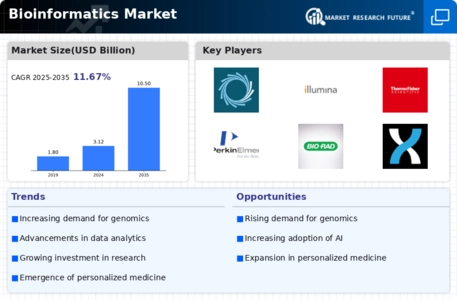
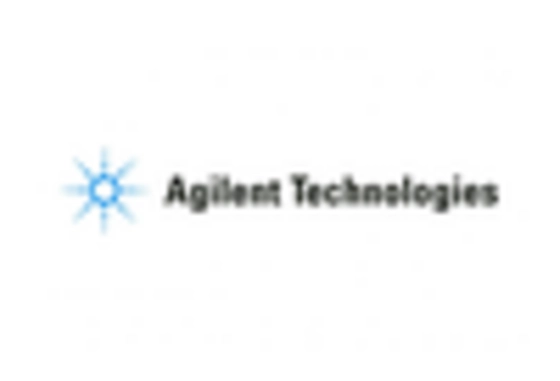
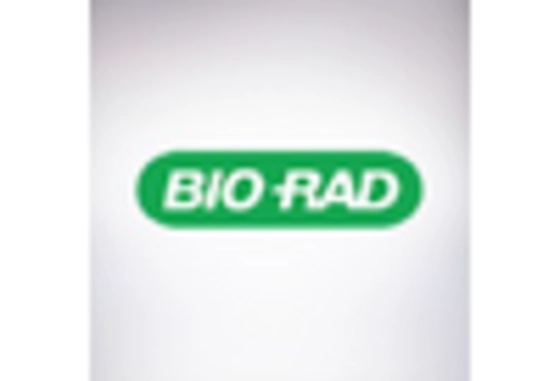
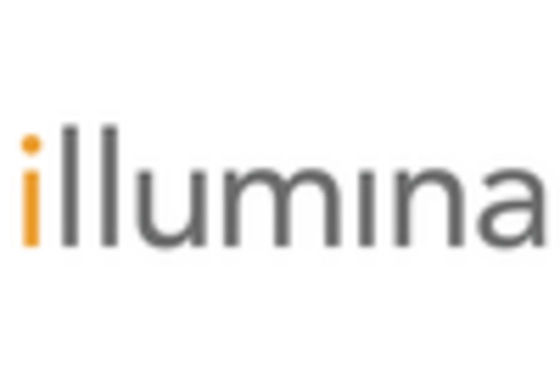
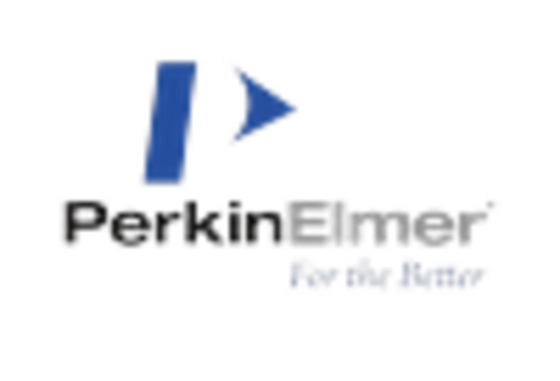
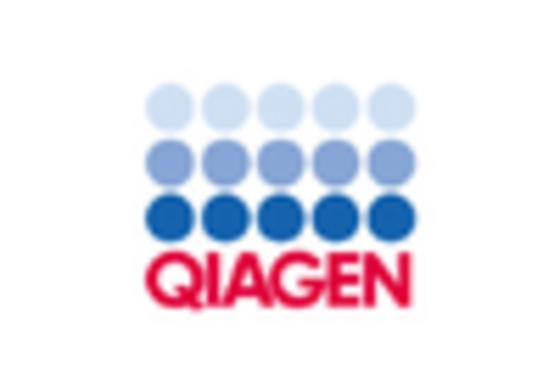


Leave a Comment